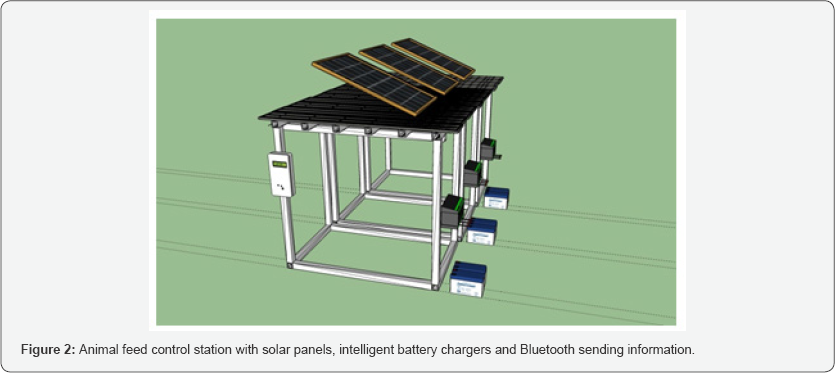The Role of Robotics in Agriculture Sciences' Automation in Sud -Oeste of Buenos Aires - Argentina- Juniper Publishers
Juniper Publishers- Journal of Robotics
Abstract
In this paper ongoing projects are presented
enlighten the important role of automation and robotics in developing
countries such as Argentina. In particular, two salient cases are
examined: the automation of an animal research's station for feed
activities and a mobile robot to reconfigure an entire flexible fence
control.
Keywords: Robotics; Automation; Precision agriculture; Precision animal control Introduction
Several activities encompass agriculture's field,
however some of them requires a special care and precision. This is the
case of fungicides; herbicides and insecticides sprayers [1].
To spray such a products is nowadays implemented by a
person dedicated to it. Due to the dangerous nature of these chemical,
alternative technologies are under study such as Robotic sprayers [2,3].
These robotic technologies are under the scope of
precision agriculture: monitoring, harvesting, spraying, weeding,
cultivation or even planting [4,5]. However a little is known or even developed for precision animal control [6,7].
Moreover, different countries face different problems
with different solutions needed. Notwithstanding, a few several
countries share problems and solutions, as for the case of countries in
Europe [8].
In this way, Sud-oeste of Argentine's Buenos Aires
Provincepossesses a top activity in animal exportation for food.
However, technology adoption for such an activity is low or inexistent
(see for instance the Phd thesis [9] in Spanish).
On the side of mathematical models, several models have been evaluated to interpolate special data [10-12]. In particular [11] provides an online application to allow the farmer or engineer to extract information up to date.
As explained, dealing with animal technology falls
under the scope of precision animal control with recent projects towards
the traceability in real time on the basis of satellite monitoring with
geo-referenced collars [13].
As it can be envisioned, the problem of animal
tracking, control and monitoring in countries like Argentina were areas
are so big, encompass a tremendous effort to cover the area with
transmission (collars) but at the same time the problem of battery
replacement, base station receiving data and autonomous robot navigation
outdoor in unstructured and rough terrains.
Working and Work-in-Progress
To cope with the needs detected, several projects
have been proposed to solve (in part) these shortcomings. Besides the
project completed to solve the traceability problem in [13], it is worth to mention to work-in-progress projects:
• Autonomous animal control robot: electric fence control
• Animal feed station with automatic counting and renewable energy
Autonomous animal control
Electric fences are a practical yet effective way to control the animal occupation of determined areas of a field [14]. However, to the time of changing them are under control, the complete electric wire must be removed and reinstalled.
To solve this problem an automatic system was
proposed in cooperation with INTA (Argentina) and Dr. Andrés García to
automatically move an electric fence to some predetermined (and able to
be reprogrammed) instants of time based upon a microcontroller and
Bluetooth communication (Figure 1 for s descriptive ide of this work-in-progress project).

Animal feed station
Another interesting project attacks the problem of
modeling the amount of feed of some specified animal along the day. To
cope with this problem, a station of three houses was constructed (Figure 2), each house delivers food only to some specific animal carrying a specific numbered collar.

These collars transmit their number wirelessly to a
receptor at the base and then, if acknowledged, the door is opened to
receive the food. Besides, the station possess three independent charges
using PV arrays in order to minimize the use of energy but also
providing a ready to use equipment for animal field control.
Conclusion
This paper presents an opinion regarding the
developing countries' necessity to rapidly adopt technologies that
alleviates heavy duties' farmers.
In this respect, several technologies were
envisioned; in particular two ongoing projects that arebeing carriedout
in Argentina were discussed:
• Autonomous animal control robot: electric fence control
• Animal feed station with automatic counting and renewable energy
The first case shows the possibilities using an
autonomous robot reconfiguring an entire flexible electric fence,
whereas the second project provides an insight into feed's animal
research.
Future work considers technology providing farmers
with technology able to automatize essential systems such that aerial
vision to track animals getting on-line counting.
For more open access journals please visit: Juniper publishers
For more articles please click on: Robotics & Automation Engineering Journal


Comments
Post a Comment